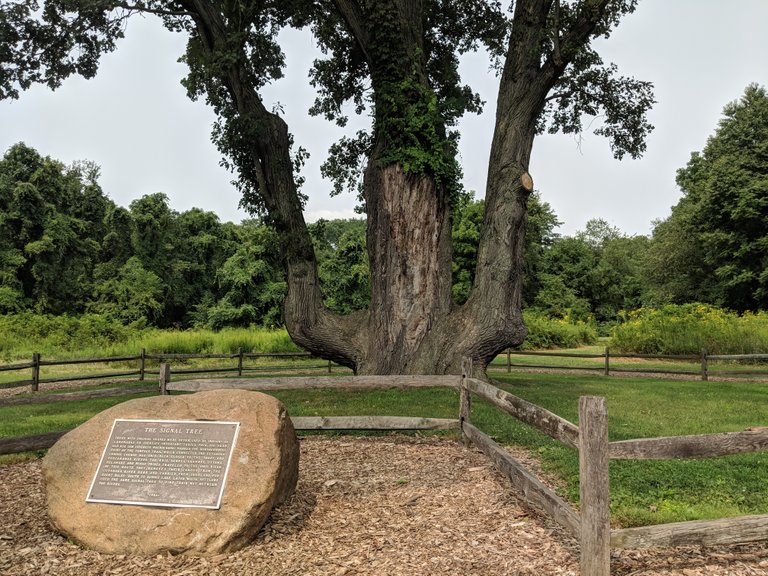
"Some people believe a strange accident shaped the (possibly) 300-year-old bur oak tree’s branches.Others think American Indians shaped the Indian Signal Tree as a sapling to achieve its unique, three-tonged structure. “The tree might have been physically manipulated by American Indians to use on a transportation route,” explains Mike Johnson, chief of natural resources for Summit Metro Parks.
Also perplexing is the fact that the Signal Tree is a bur oak — a variety that experts say is an unusual find in Northeast Ohio. And, while the use of signal trees was once common practice, it is uncommon to find one with a three-tonged structure."
I took a short hike out to the Signal Tree the other day. It's so amazing to see. The plaque beside it says that it is over 300 years old and was used by American Indians as a marker for trade routes near the river.
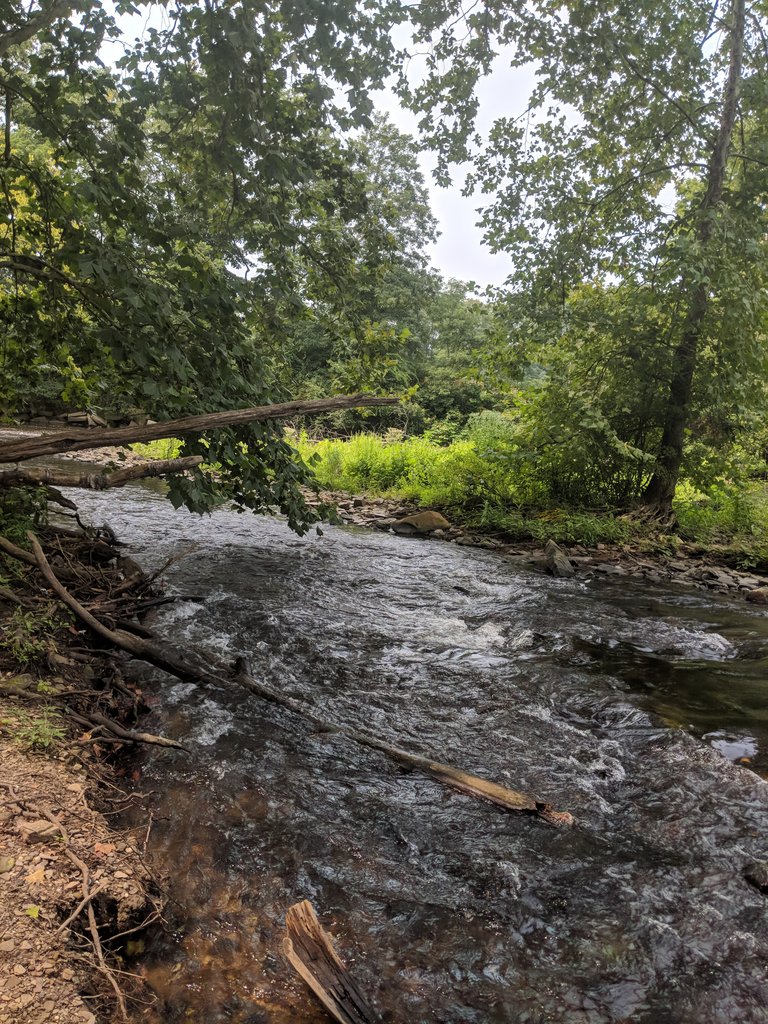
I continued searching for edible wild plants as I hiked along the river. The trail loops around and begins and ends at the signal tree. I got off the trail and balanced on some rocks over to a rocked area in the middle of the river and skipped some stones.
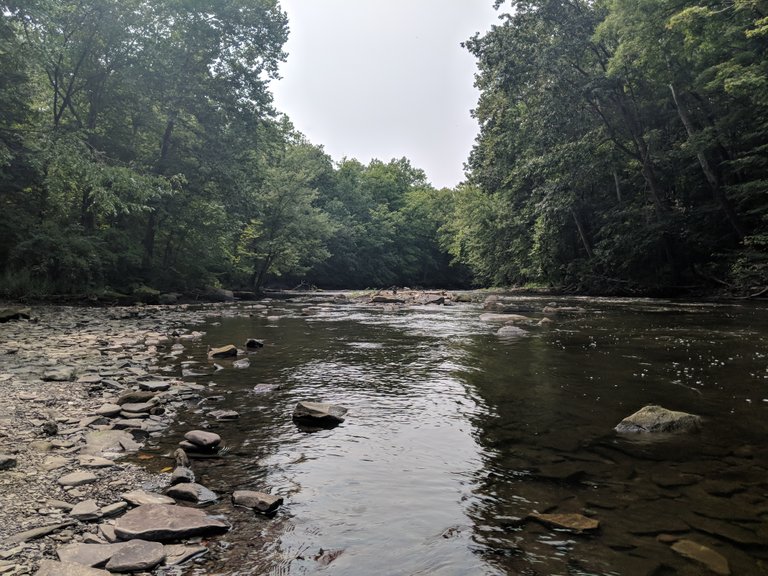
The trail wound around to an old abandoned road where there were some distressed power lines. I found some Sassafras. Most of the tree is edible and the smaller branches have a rootbeer / lemon taste. You can make tea out of the roots, bark, and leaves.
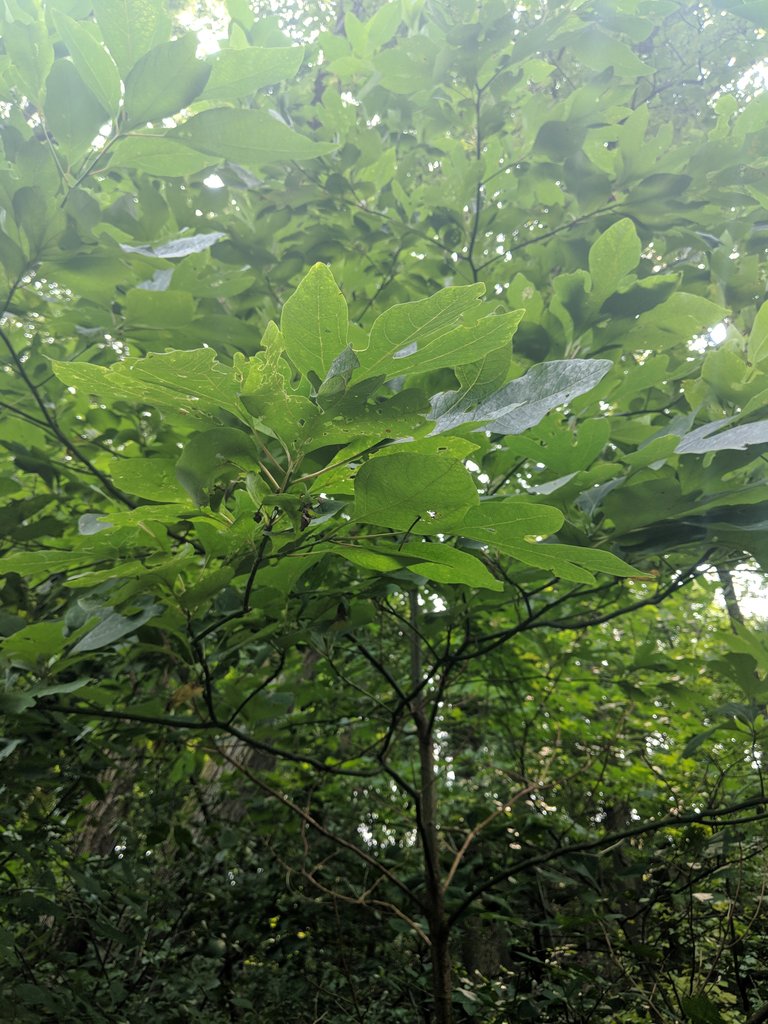
There weren't many people out there so I had a lot of time to clear my head and think. As I started walking more slowly, I began to notice several other plants along the way.
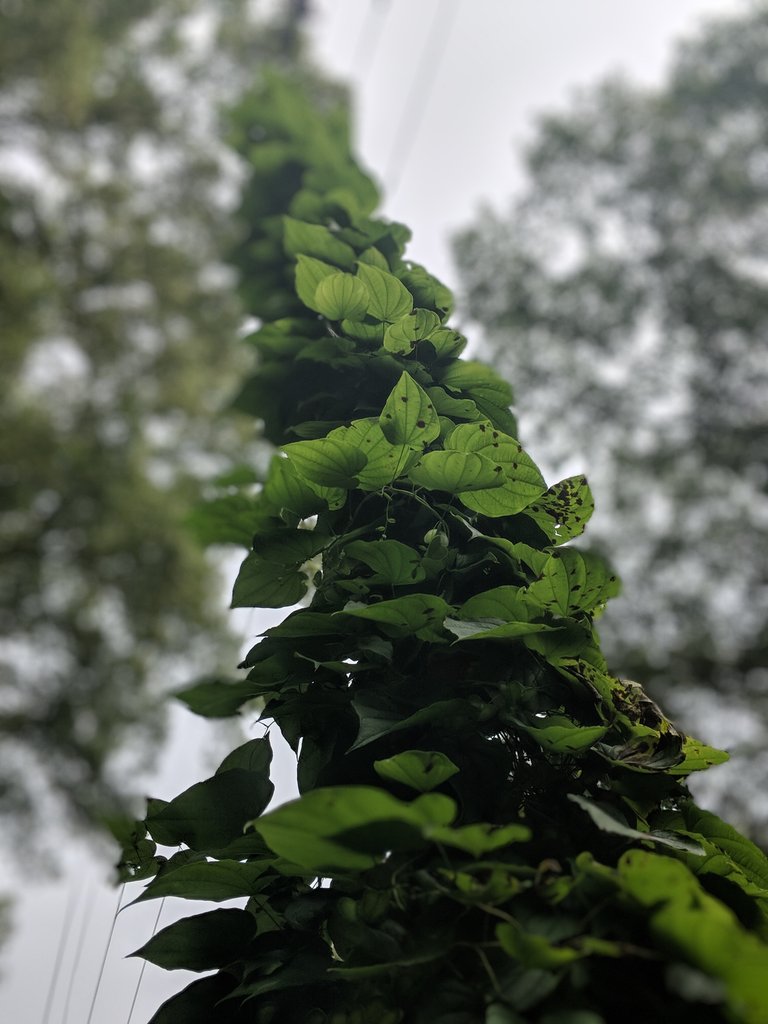
I started using an app called Picture This! and I've found usually it's pretty accurate. But, I think if you are going to base whether or not something is edible you should probably double check a field guide, since there are many toxic plants that grow among edible ones and look very much alike.

For instance, the app correctly identified this fruited plant called Doll's eyes. Although the small white berries might look good, they are very toxic, listed as number one on the 17 Plants that Could Kill You. The plant contains a toxin that relax cardiac muscle tissue. Side effects include stomach cramps, swelling of mouth, hallucinations, followed by cardiac arrest and death.
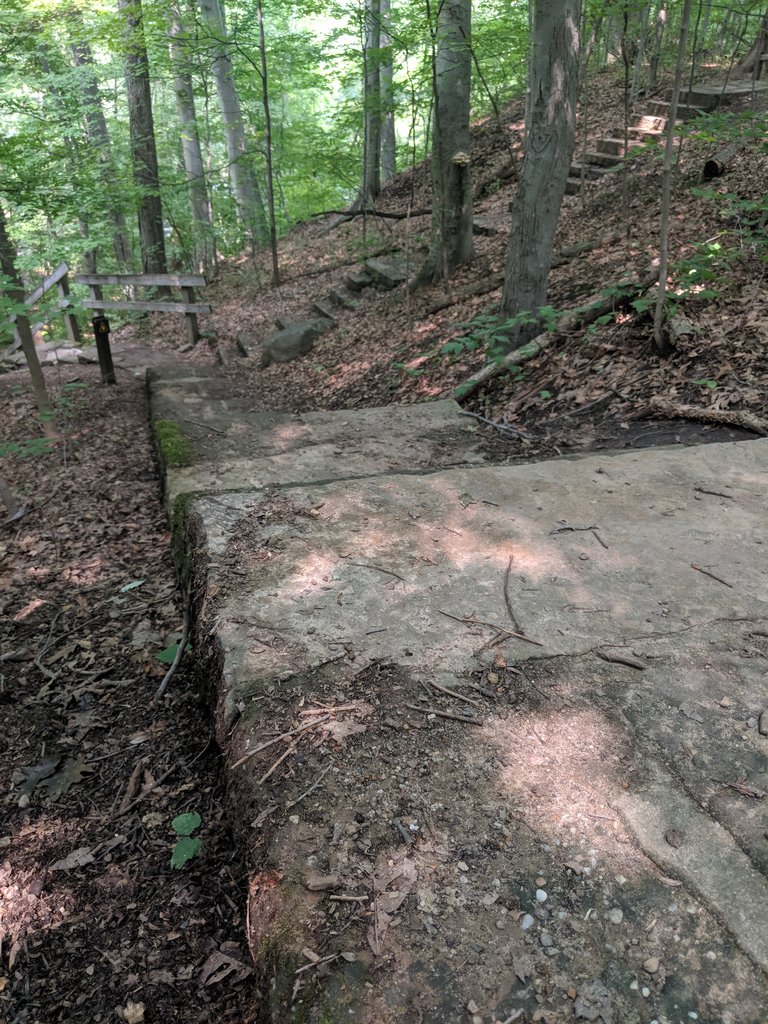
Weaving back down several flights of old stone steps, the path leads me towards the river again. There are a few people out grilling food and the smoke fills the air.
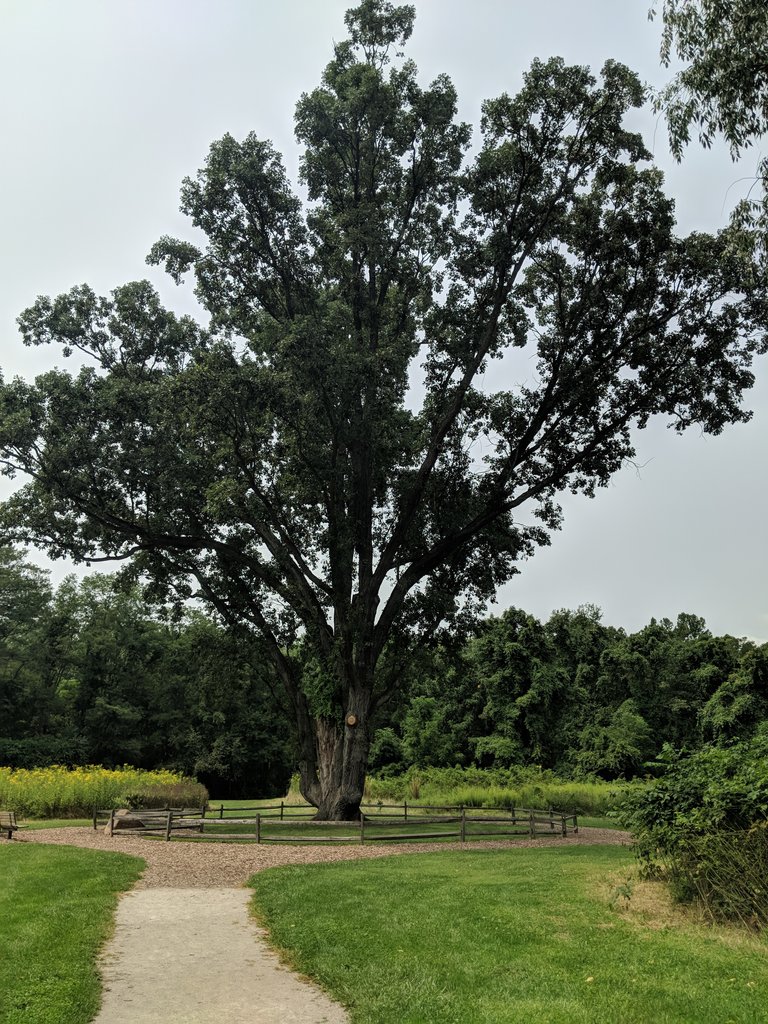
It's pretty amazing how the natives were able to survive in the wilderness that does contain an abundance of edible foods, fish, and game. They had to have knowledge of which plants to harvest and ones to avoid, passing down this information to later generations. If I had to guess, I would bet that the natives planted the Signal Tree here and used it to mark the spot of an area of wilderness that contains an abundance of life, and returned here every spring to enjoy it.
As always, if you enjoyed what you read or want to use any of my original photos, please feel free to also give a donation of Monero (XMR) using the following QR Code and address:
49euXTZHXcnRDy5MrKFHirBRXjKuZtEYujjCKcwrDuCiKBgev7E2DztaFC4JKP4ZCuN8J3Pp971HHFAcph6dujRTTFdNgbh


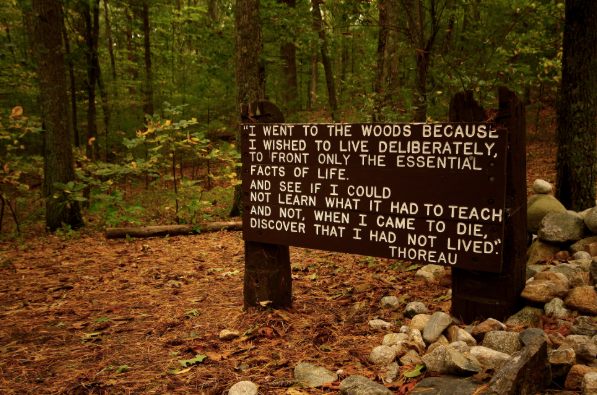
Peace, Abundance, and Liberty Network (PALnet) Discord Channel. It's a completely public and open space to all members of the Steemit community who voluntarily choose to be there.Congratulations! This post has been upvoted from the communal account, @minnowsupport, by mw480 from the Minnow Support Project. It's a witness project run by aggroed, ausbitbank, teamsteem, someguy123, neoxian, followbtcnews, and netuoso. The goal is to help Steemit grow by supporting Minnows. Please find us at the
If you would like to delegate to the Minnow Support Project you can do so by clicking on the following links: 50SP, 100SP, 250SP, 500SP, 1000SP, 5000SP.
Be sure to leave at least 50SP undelegated on your account.